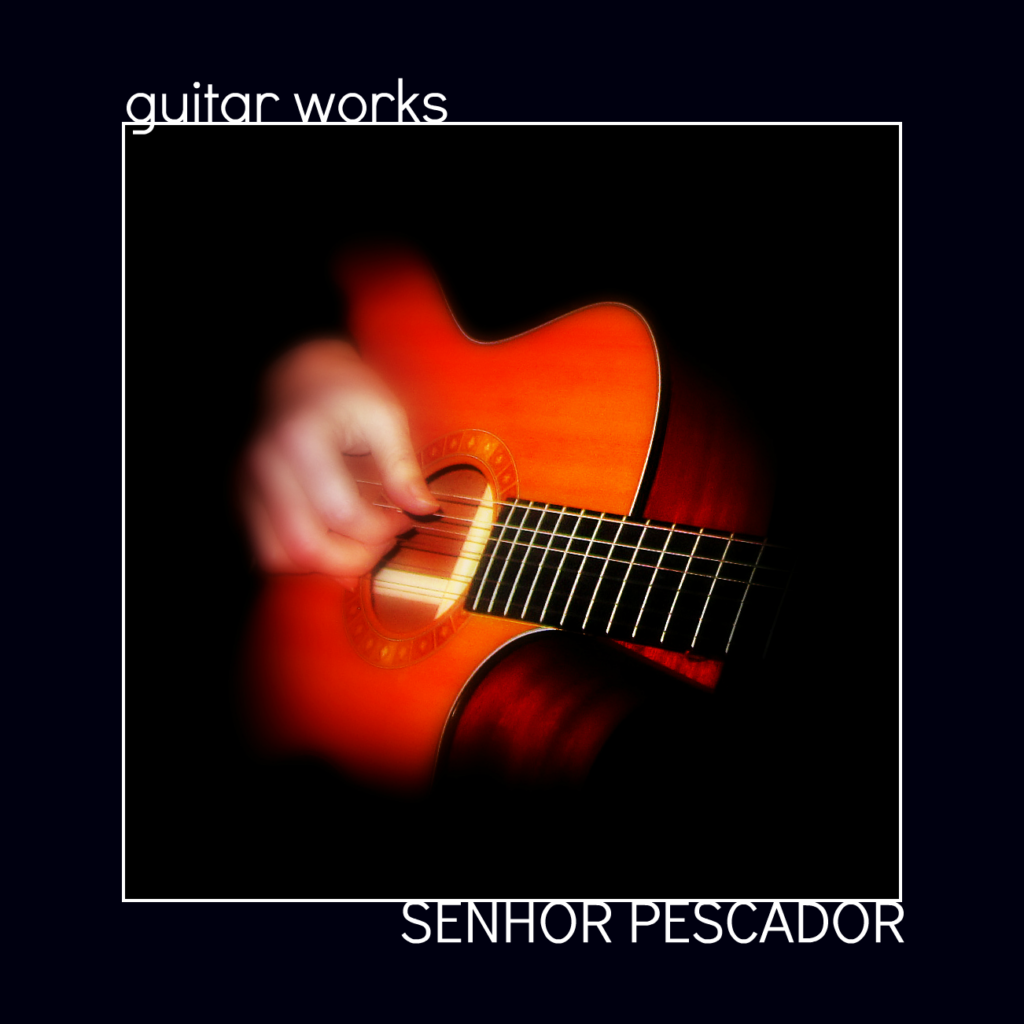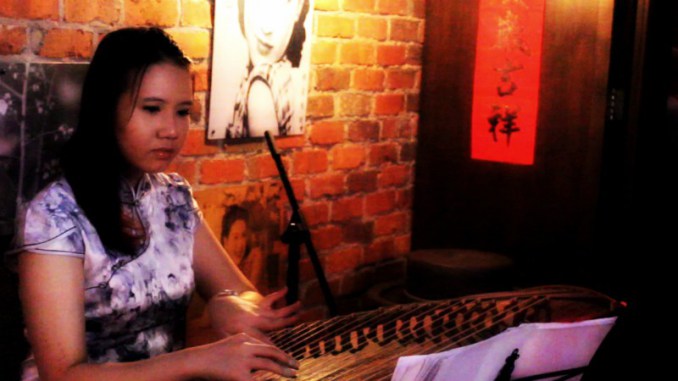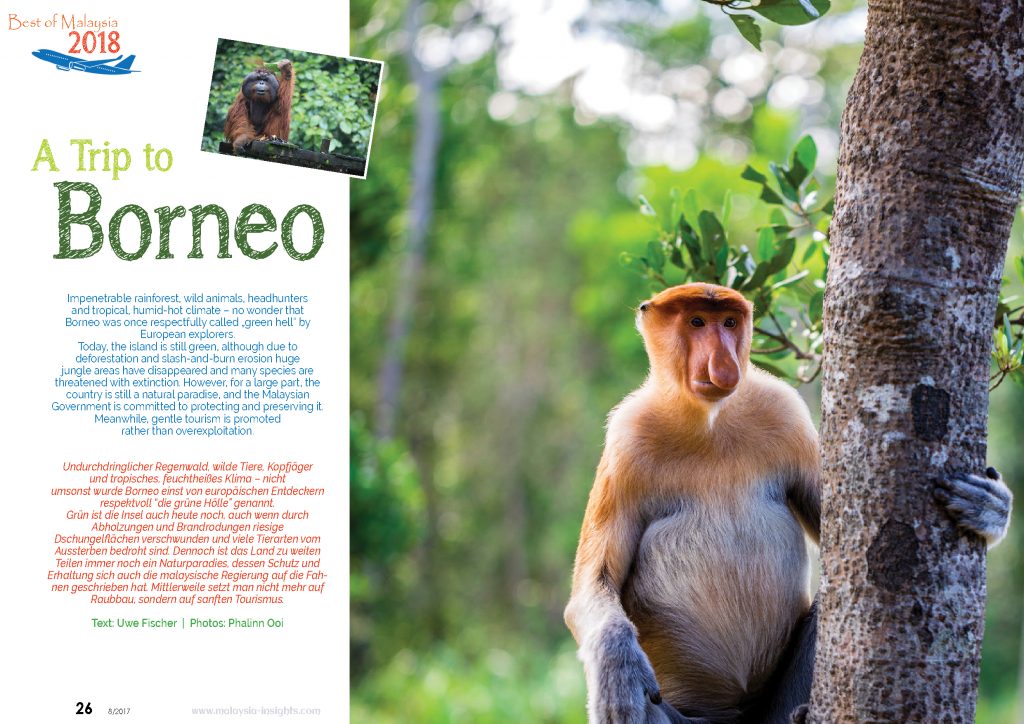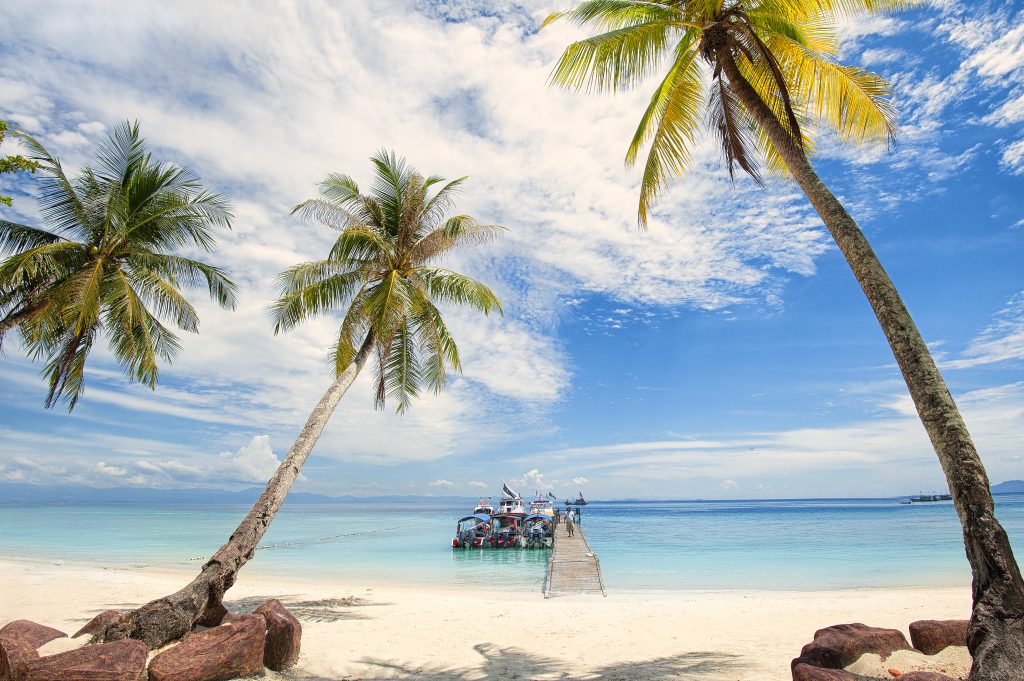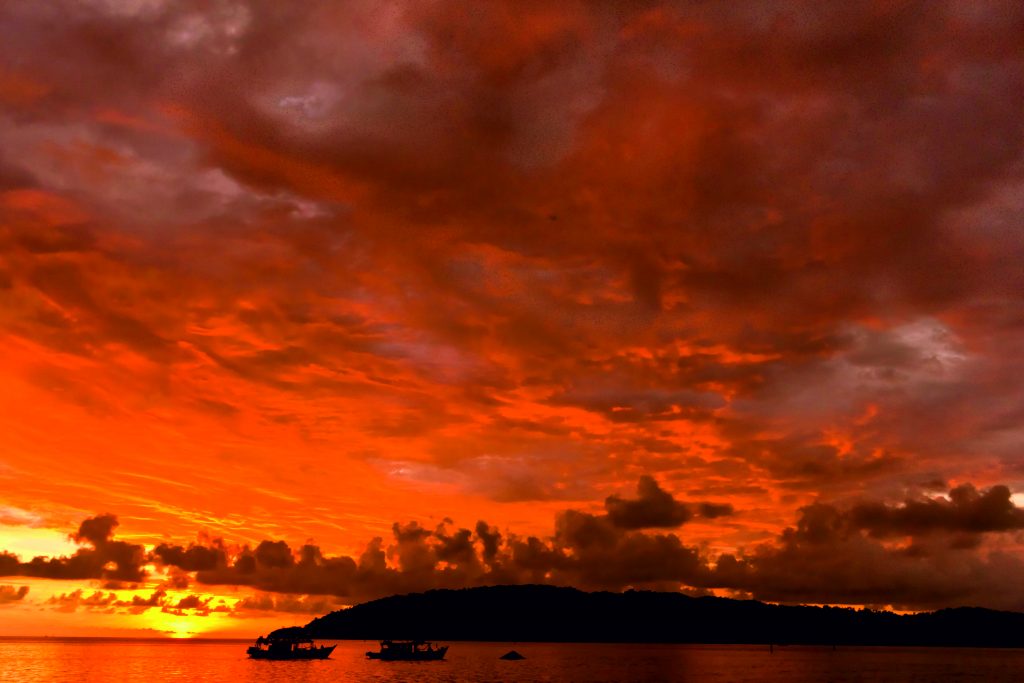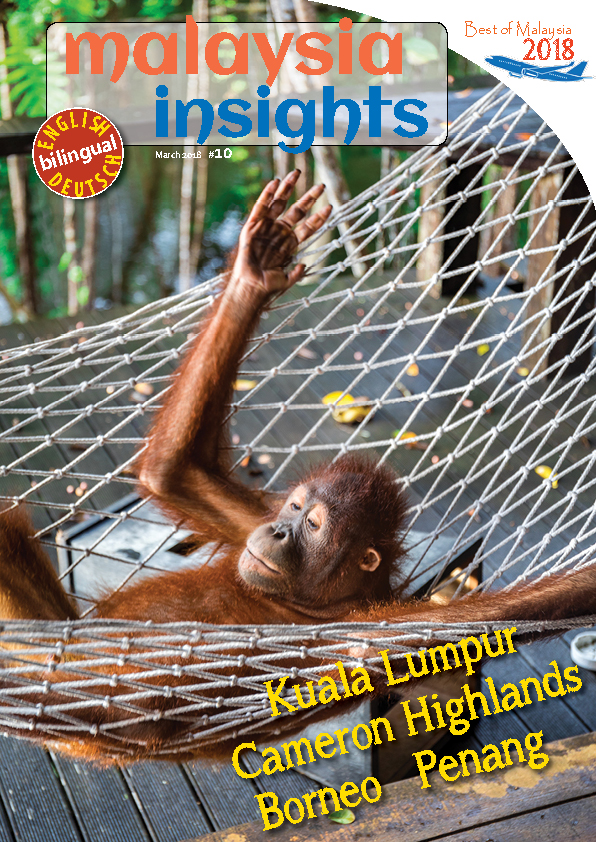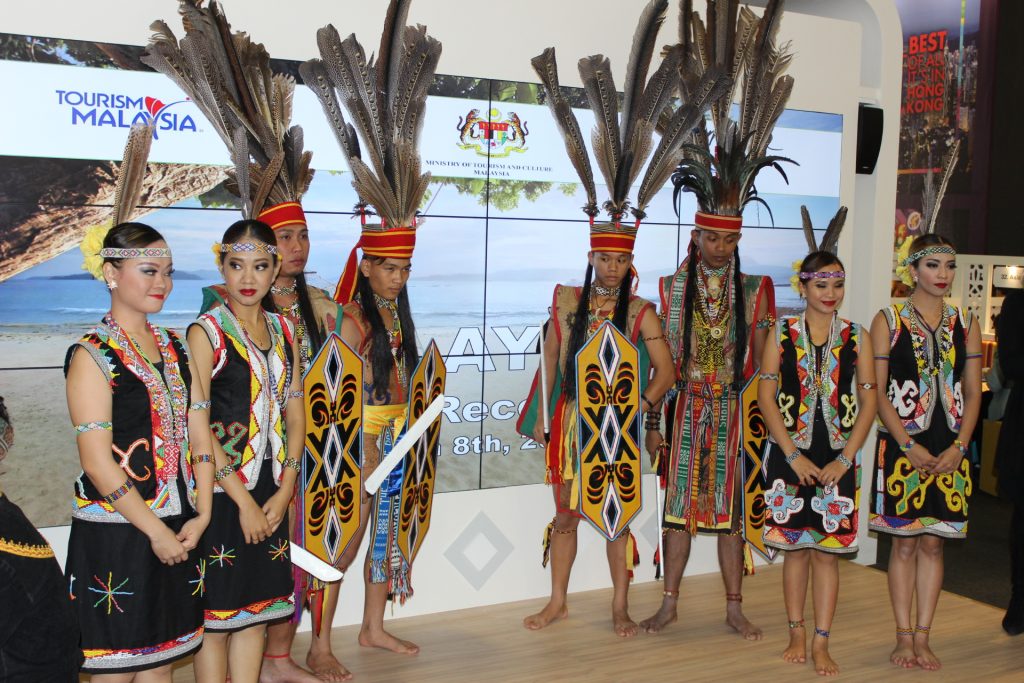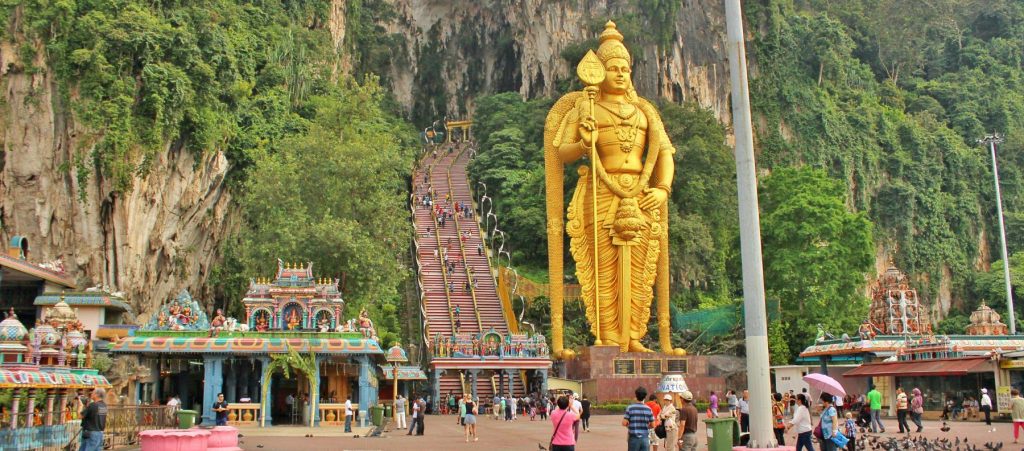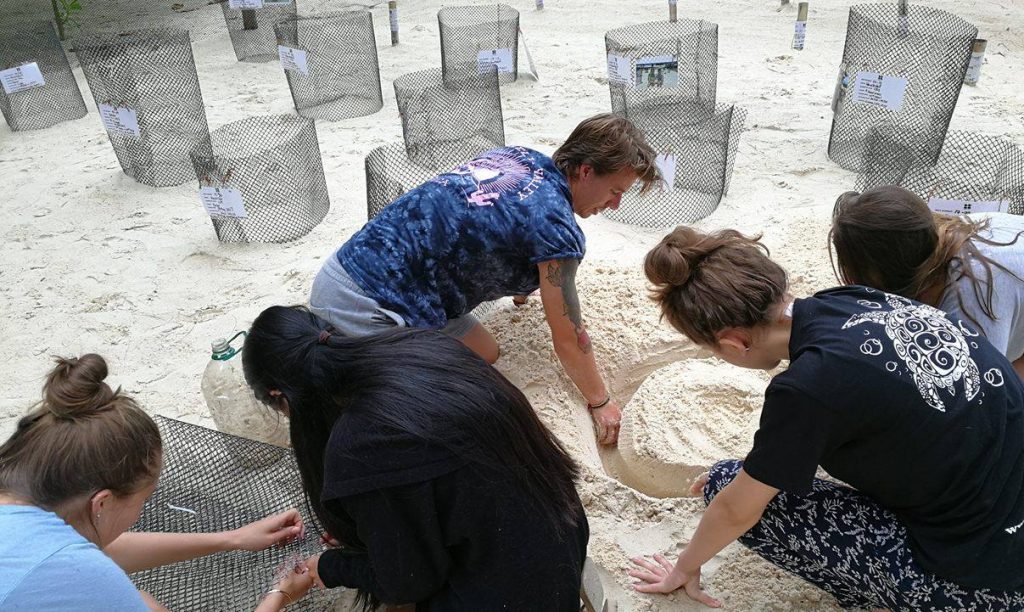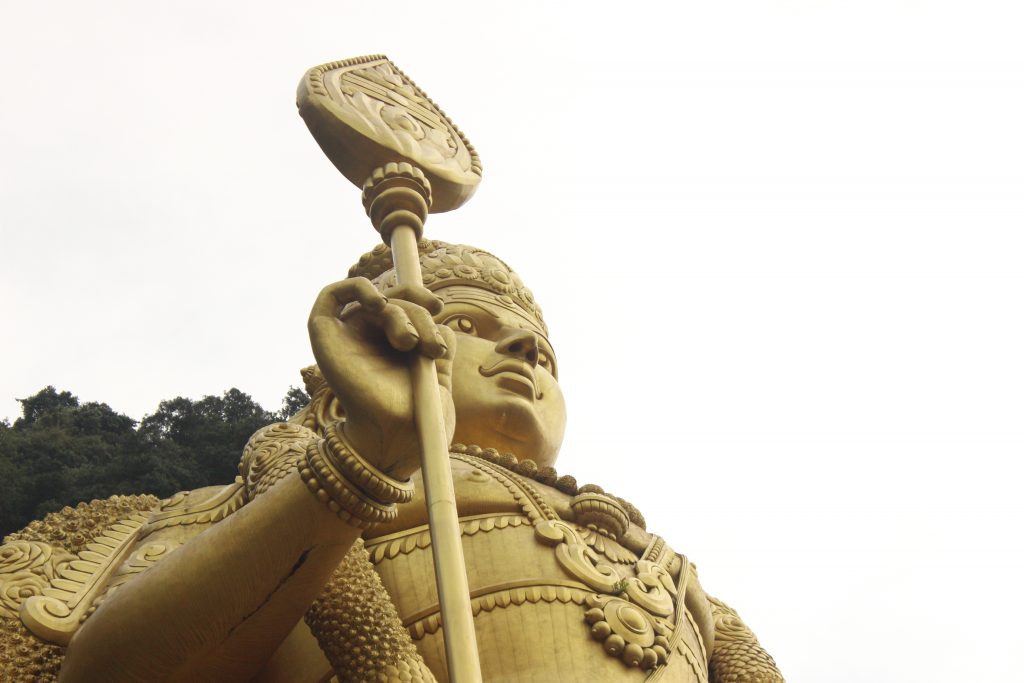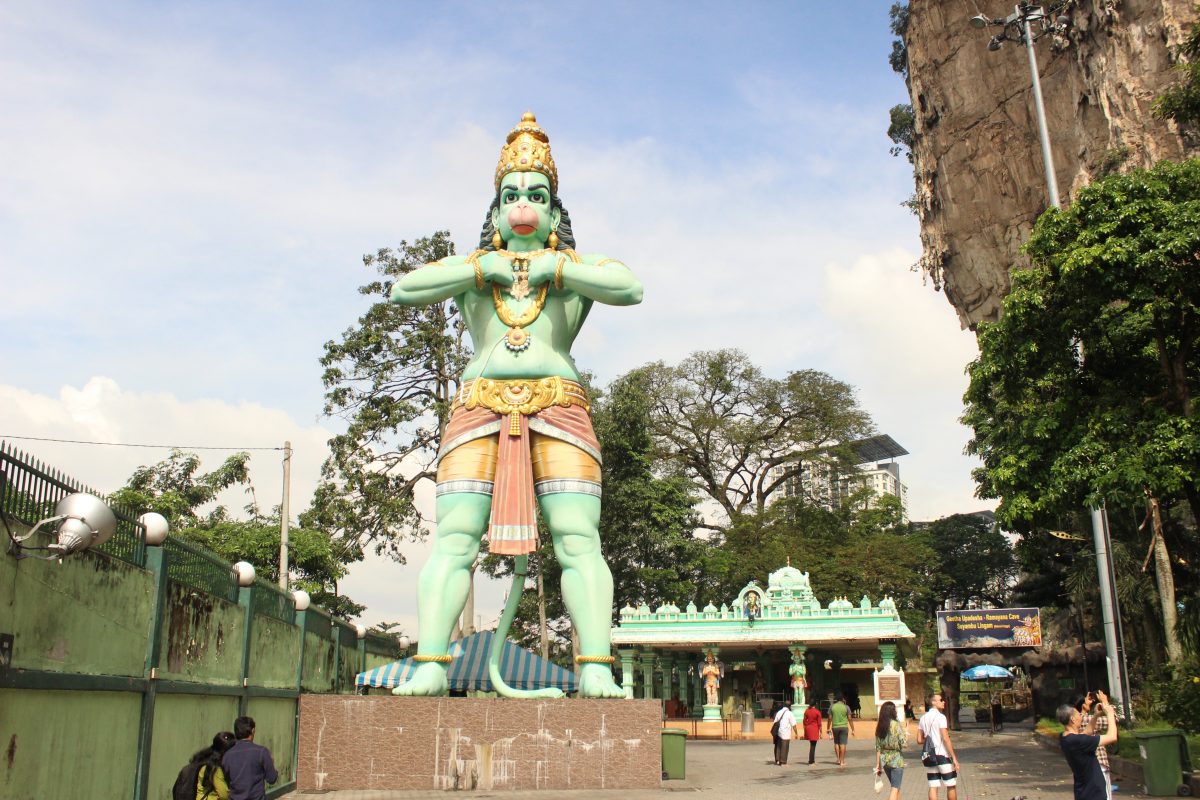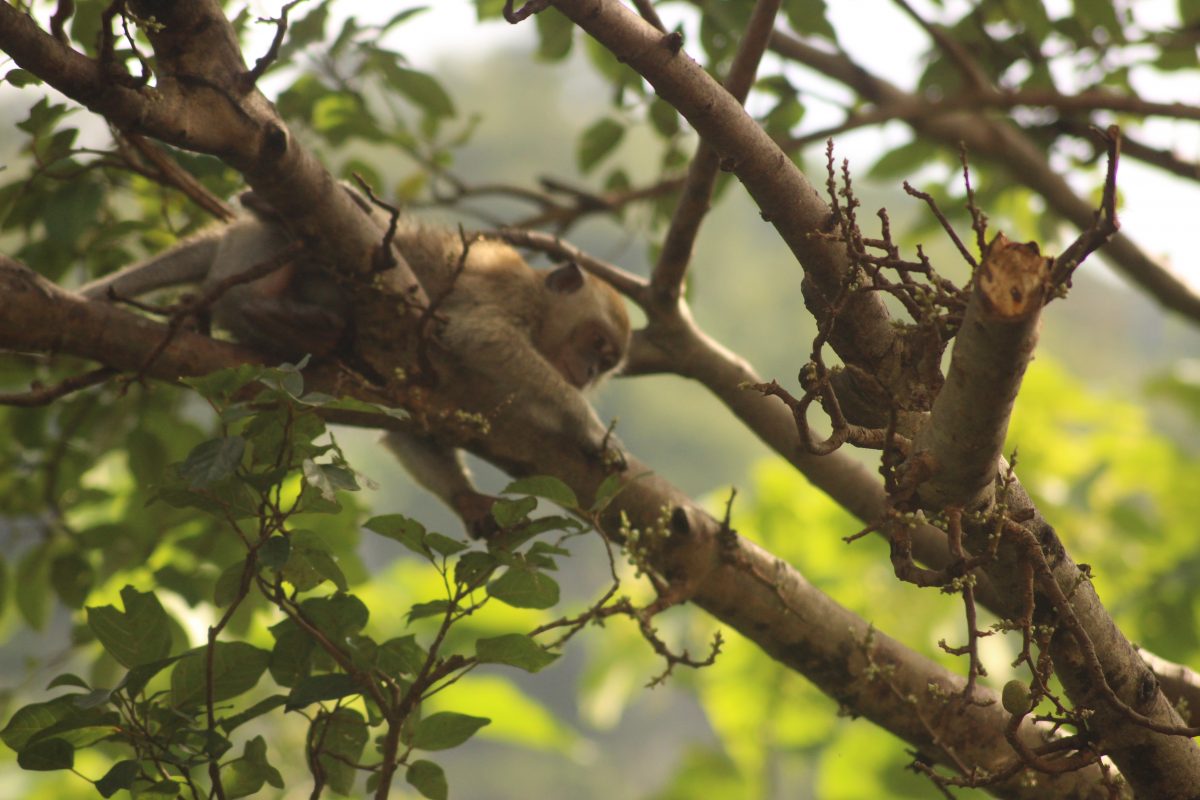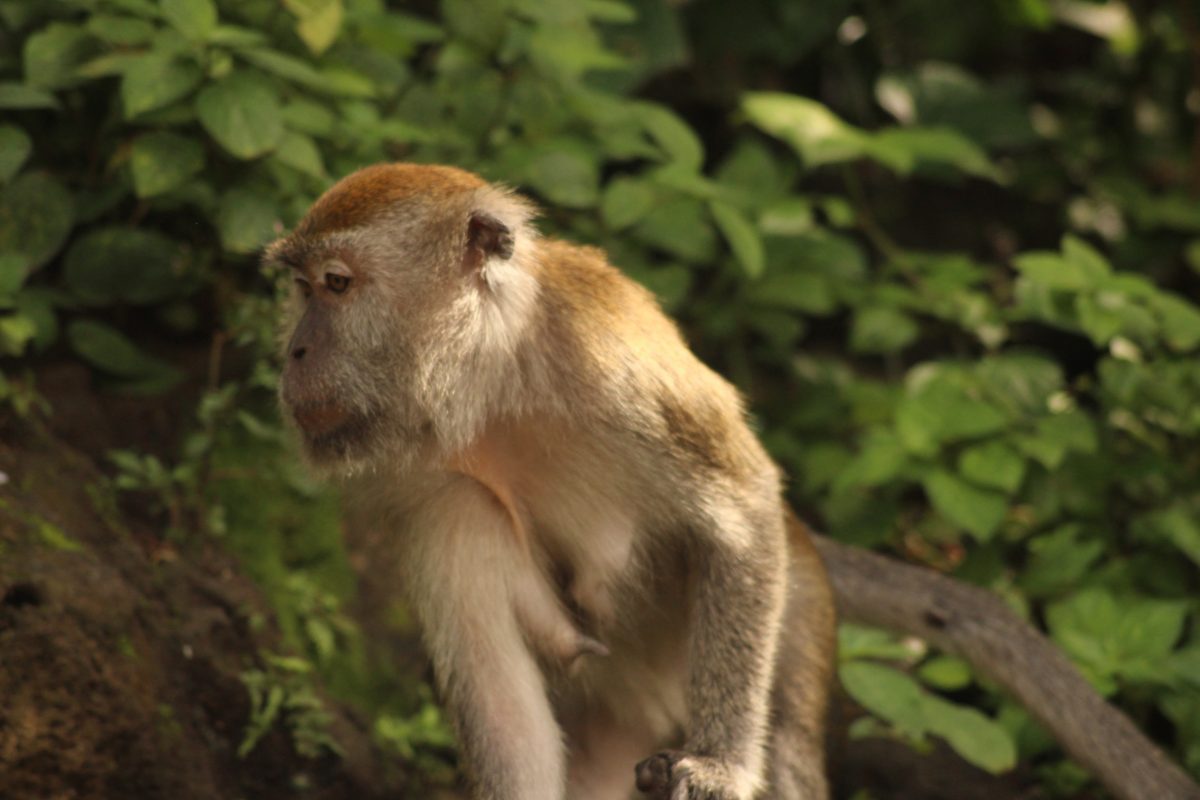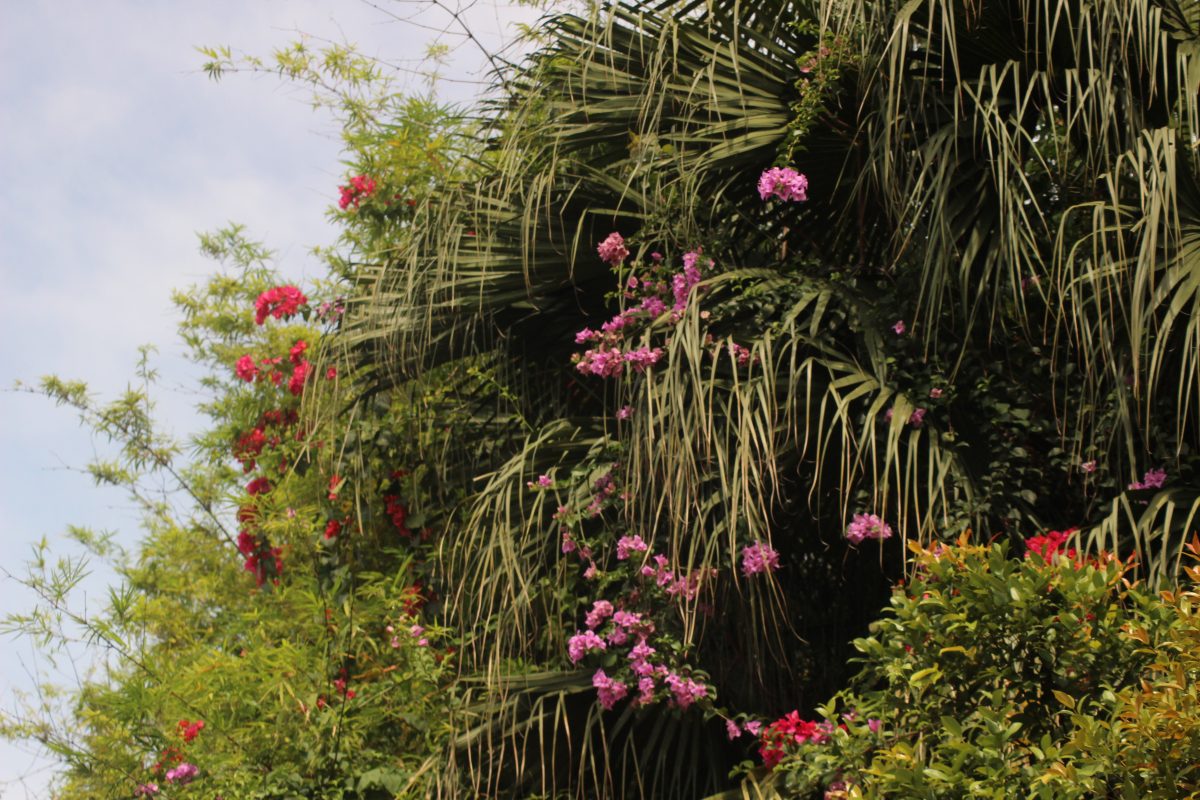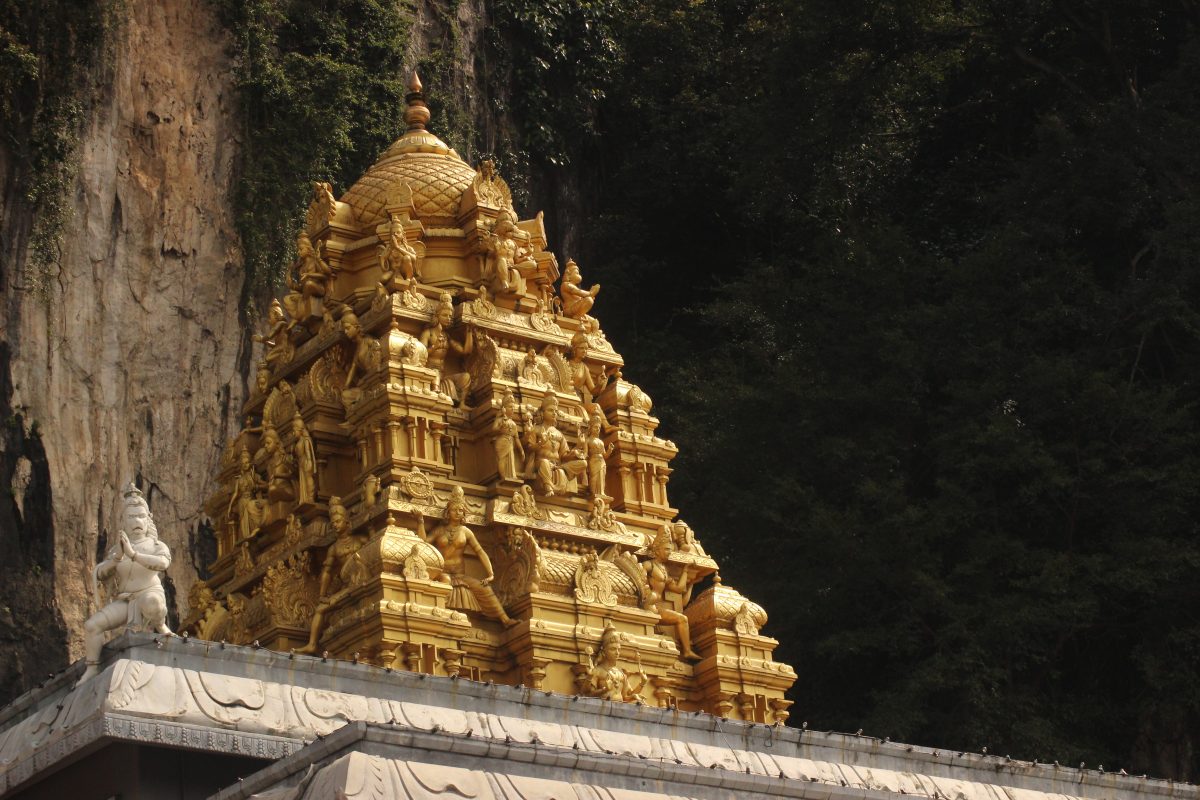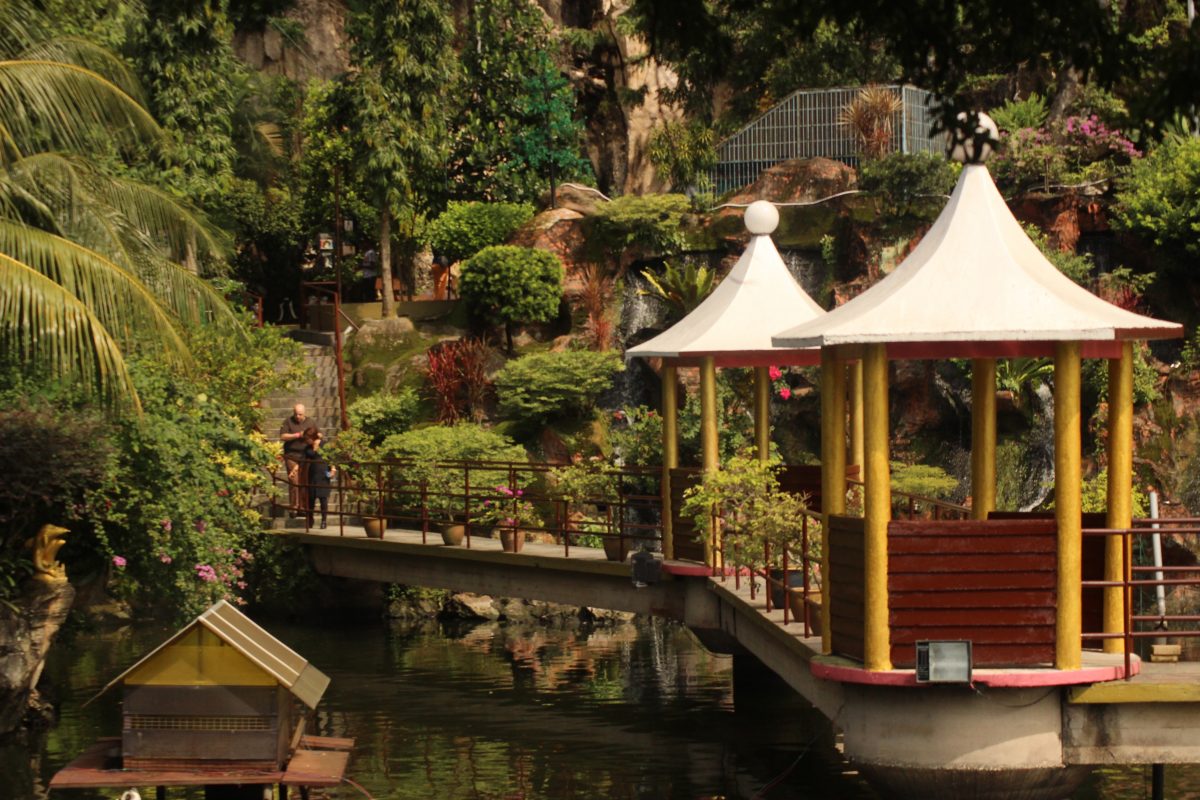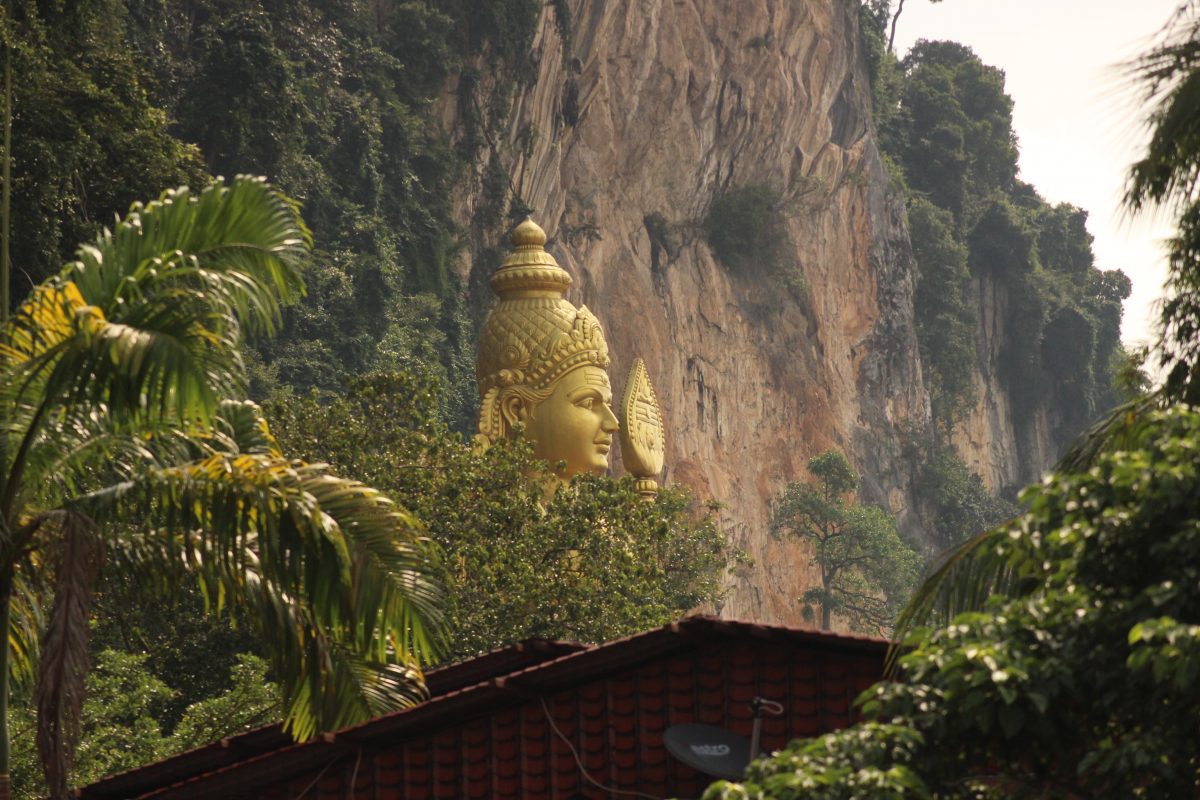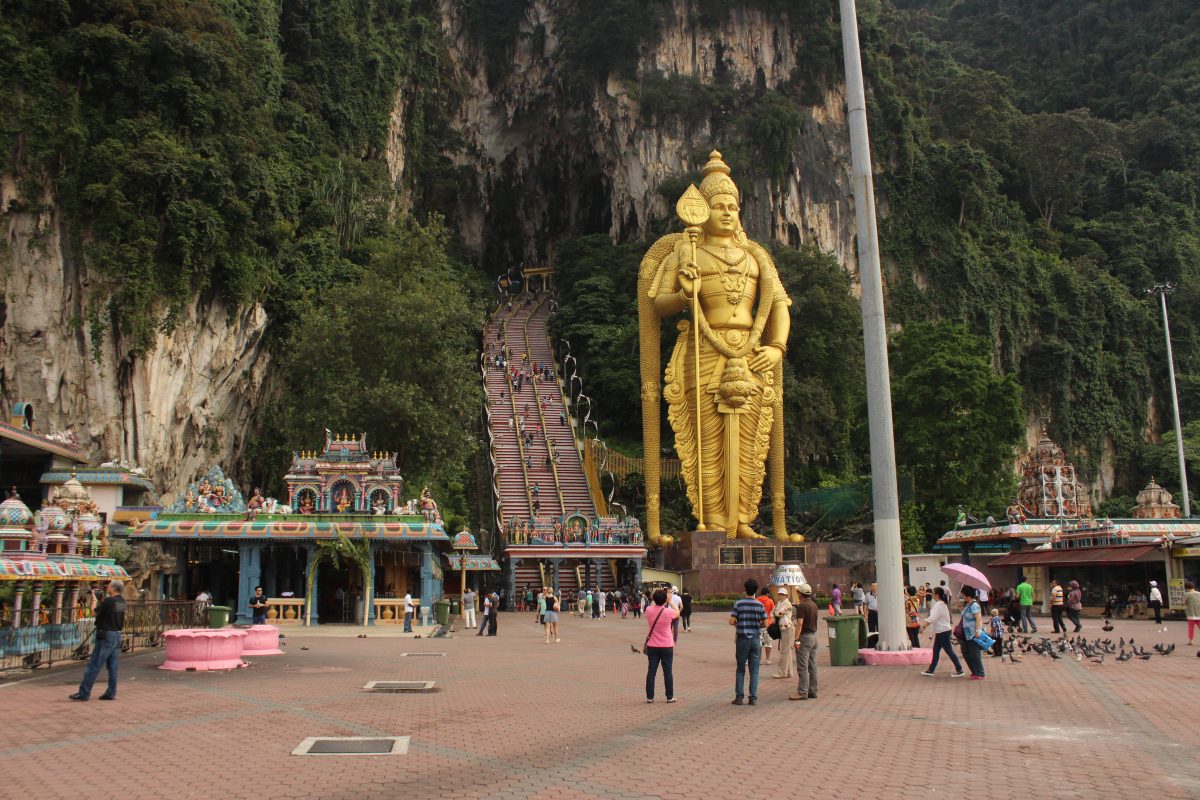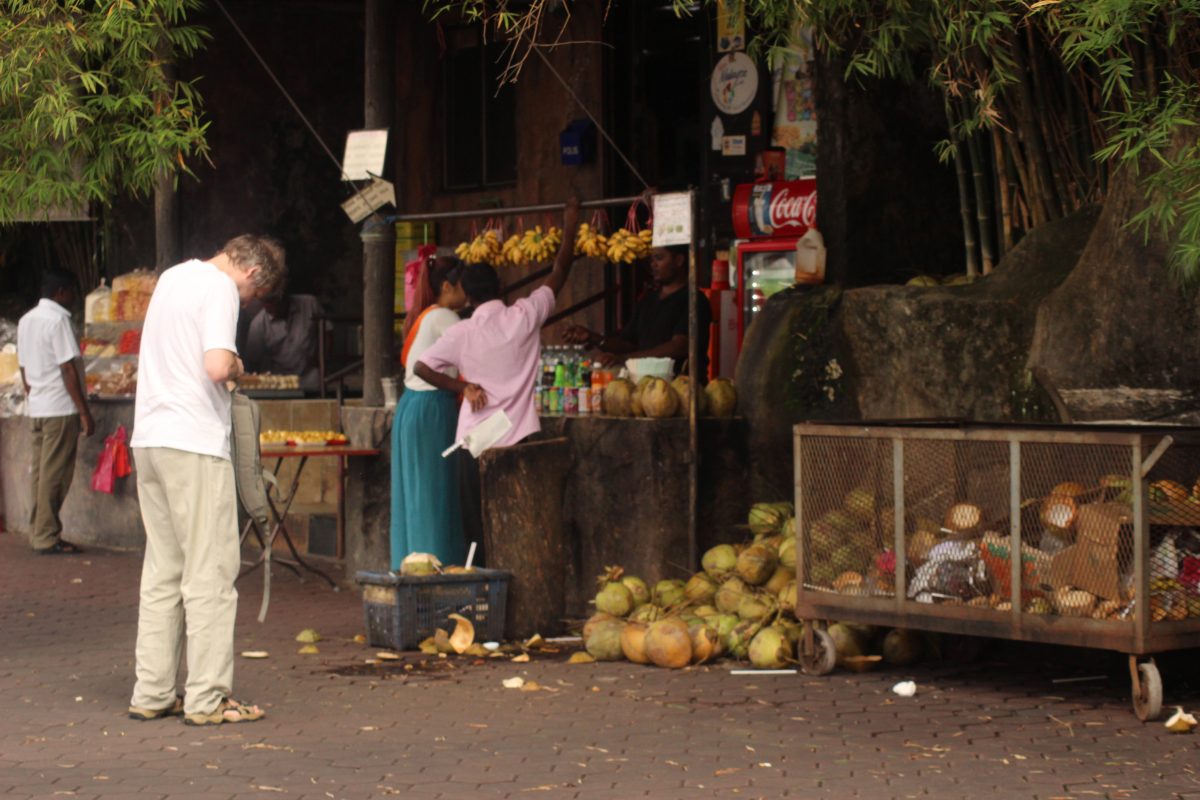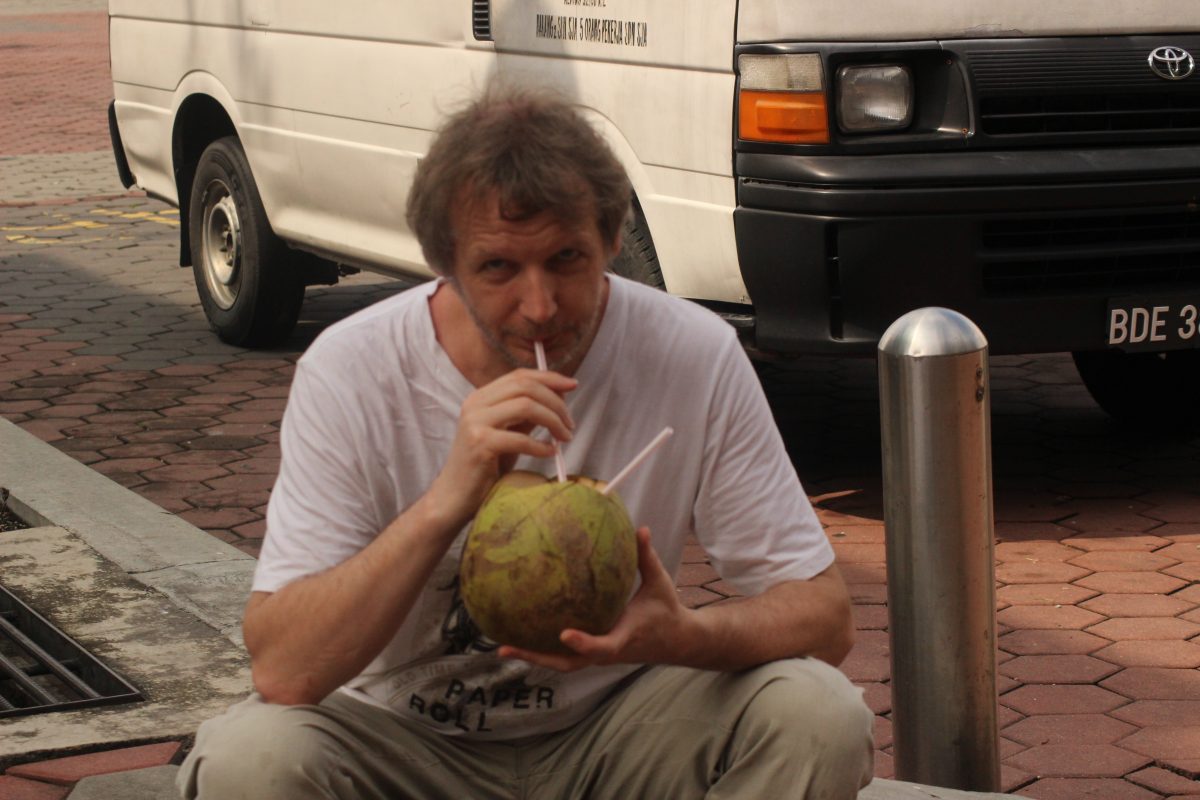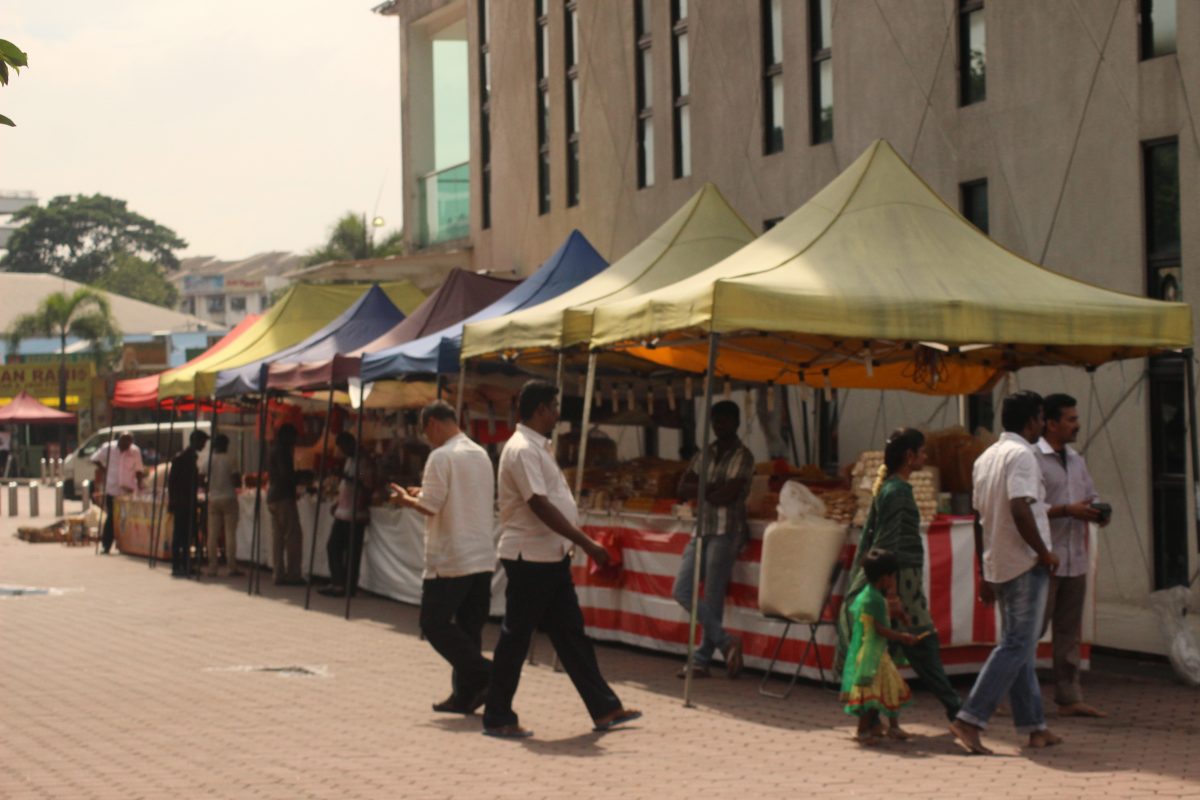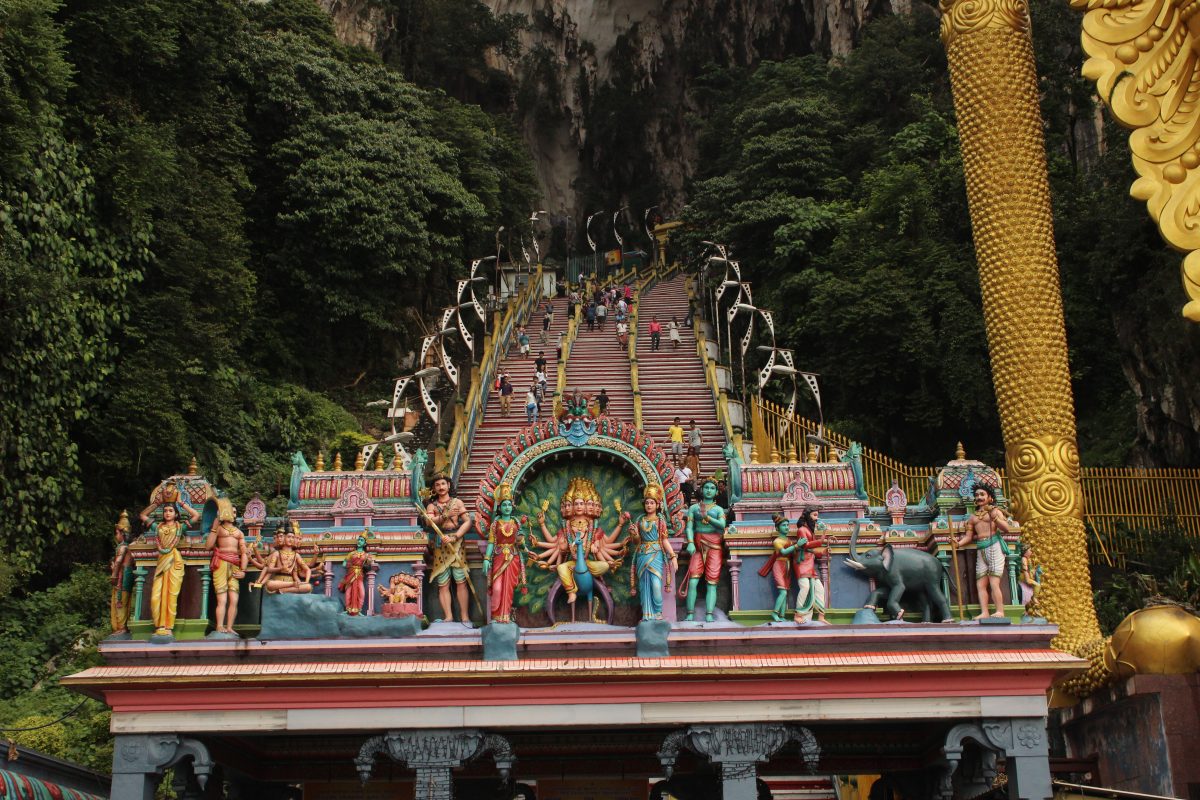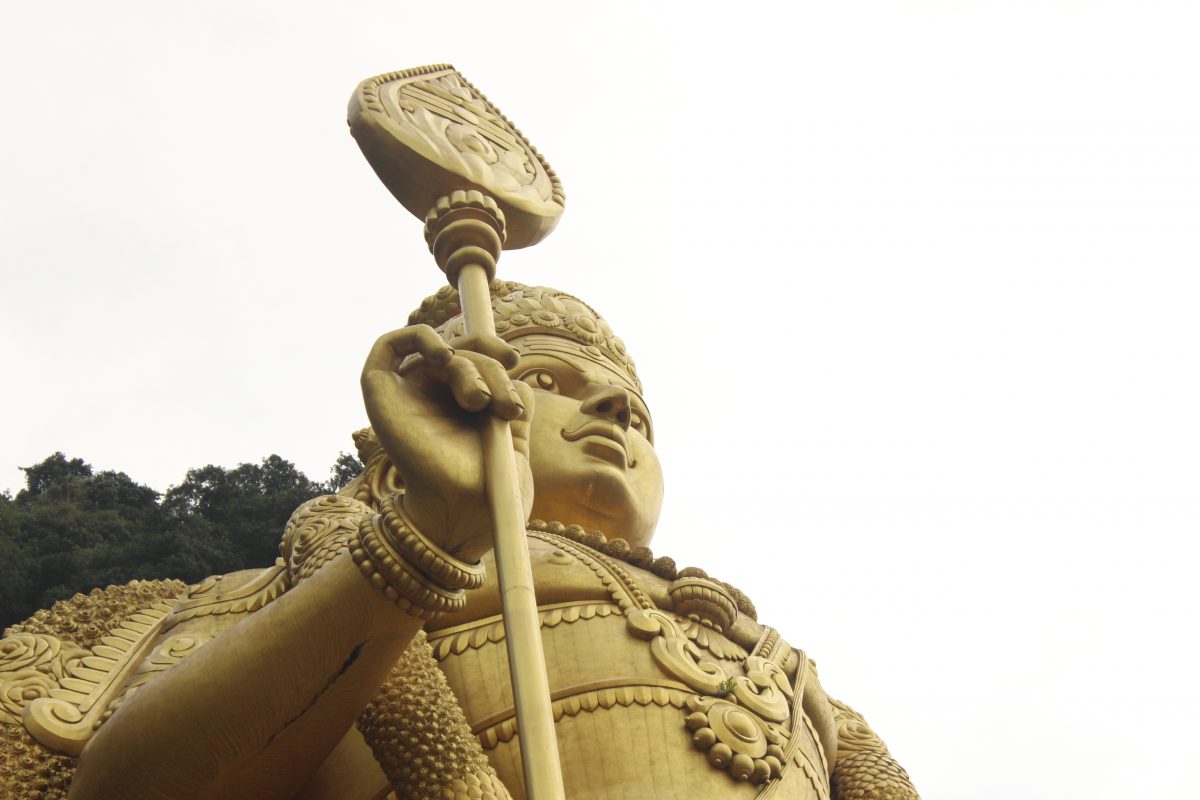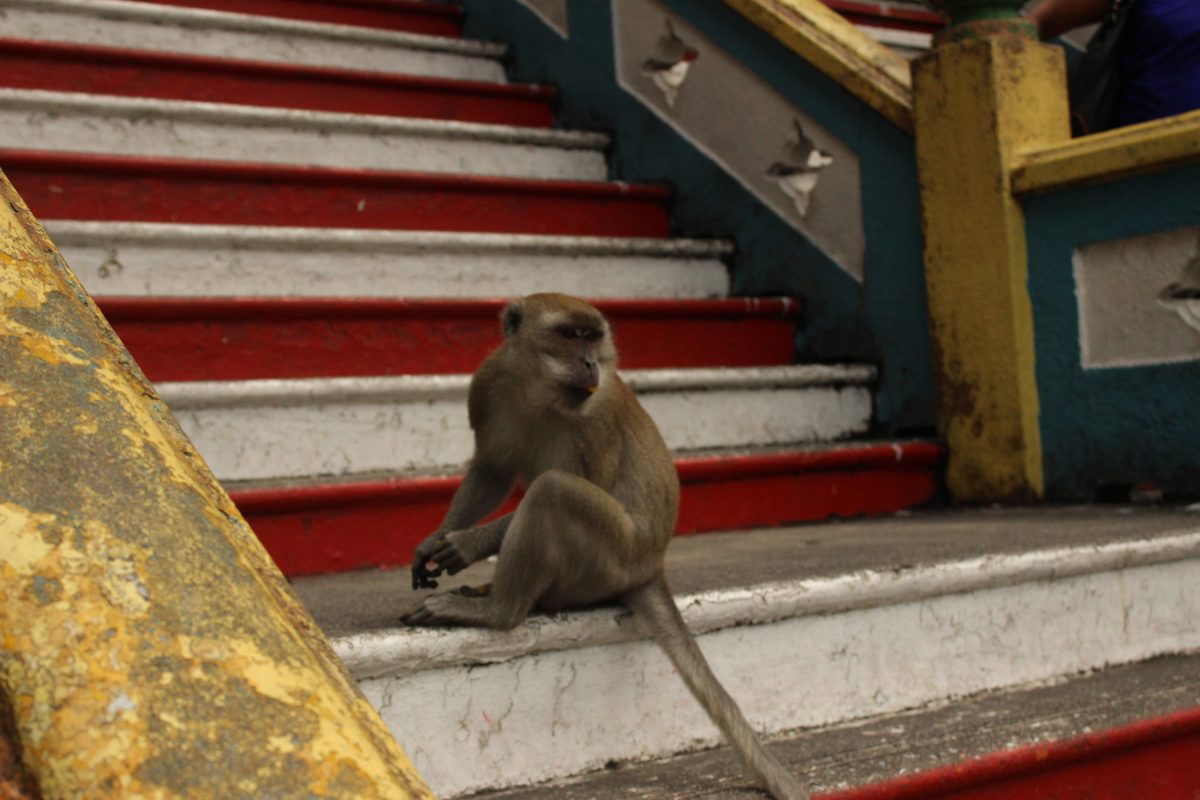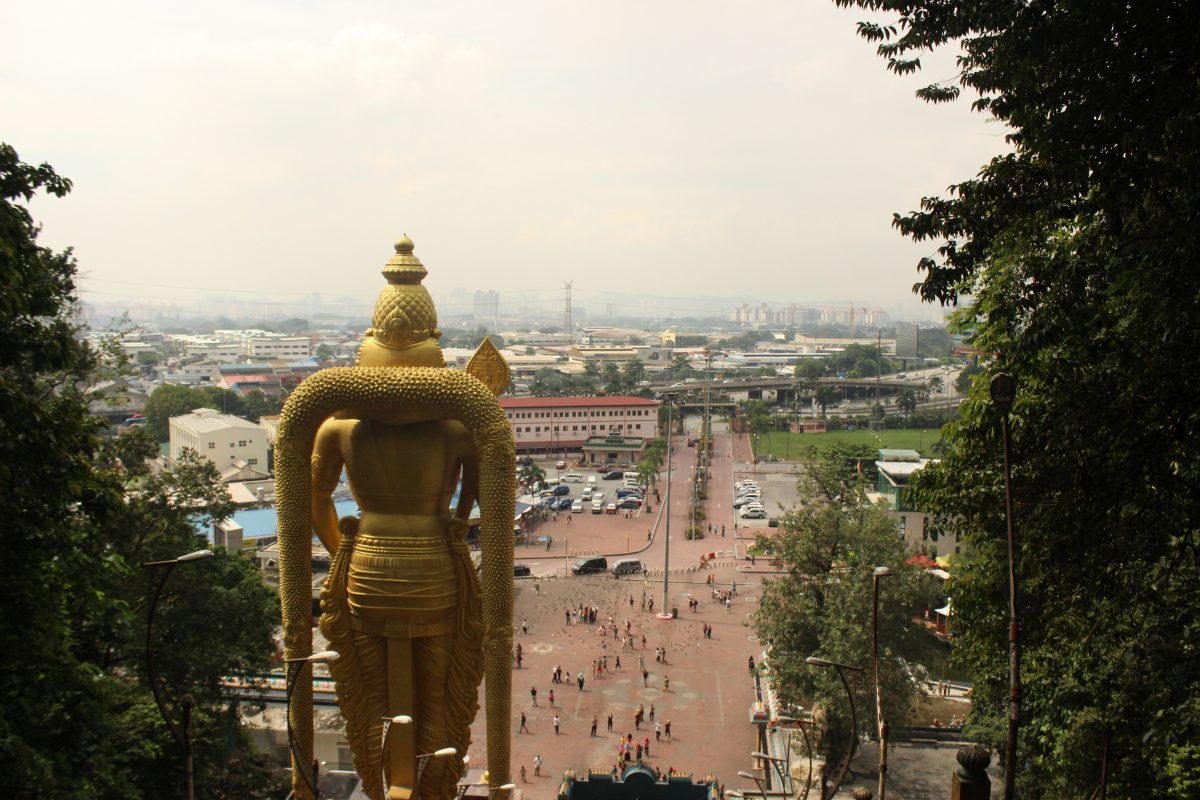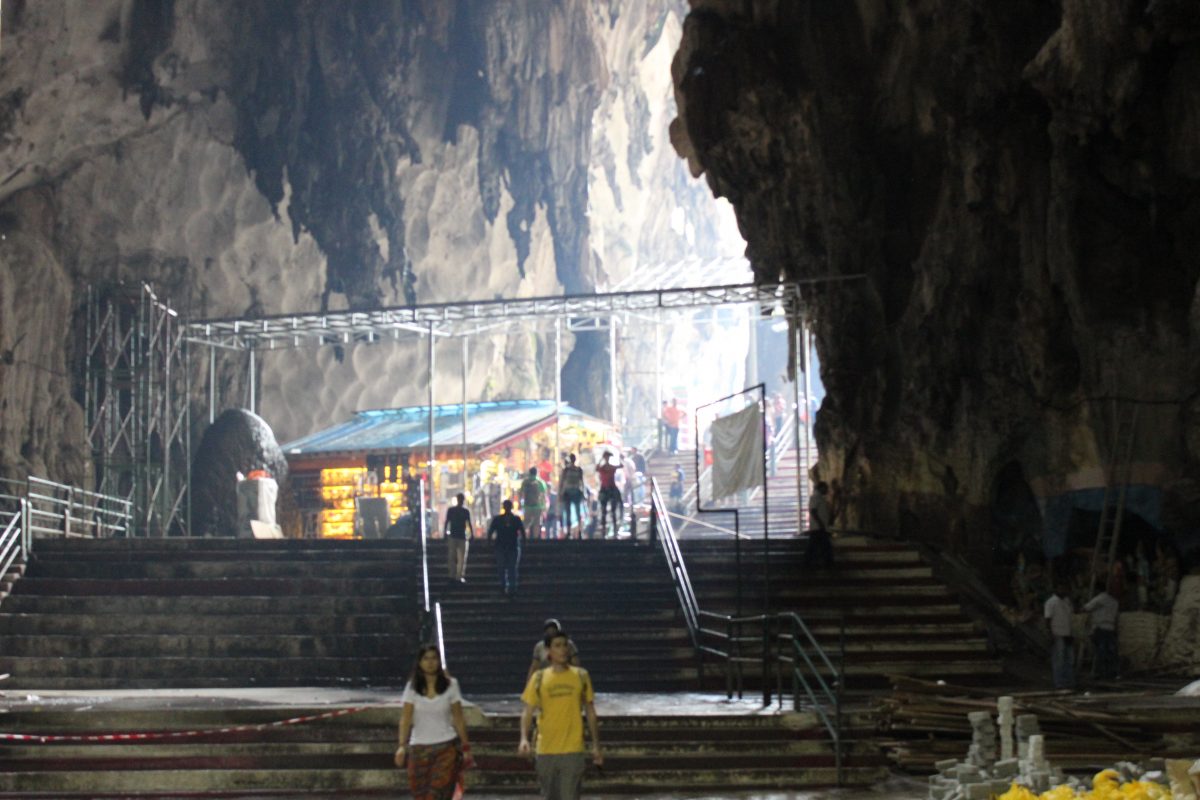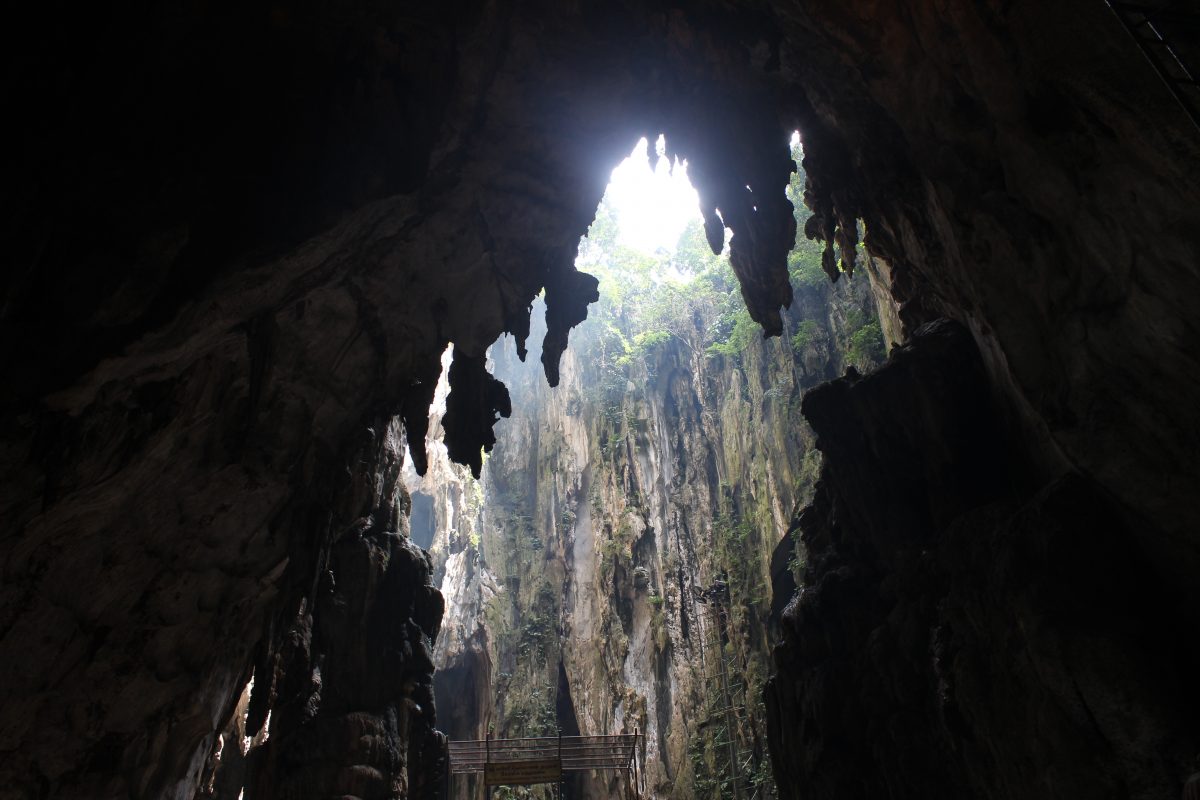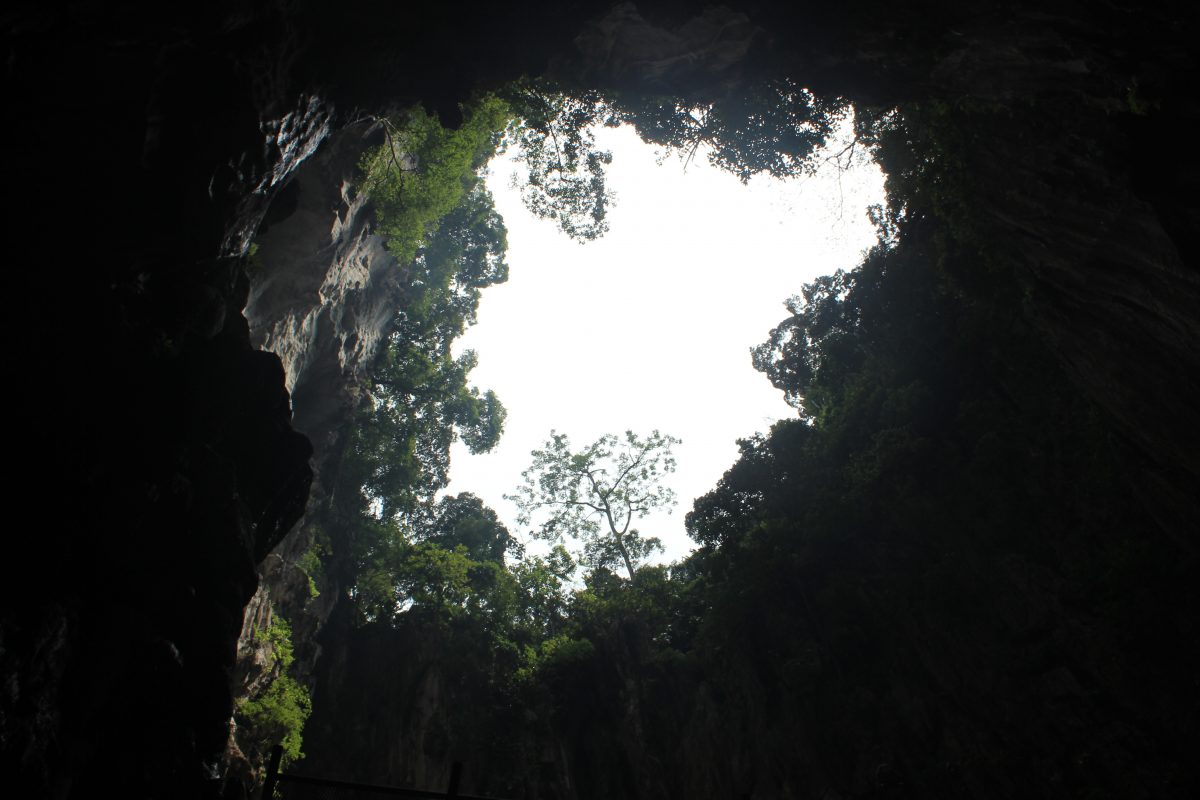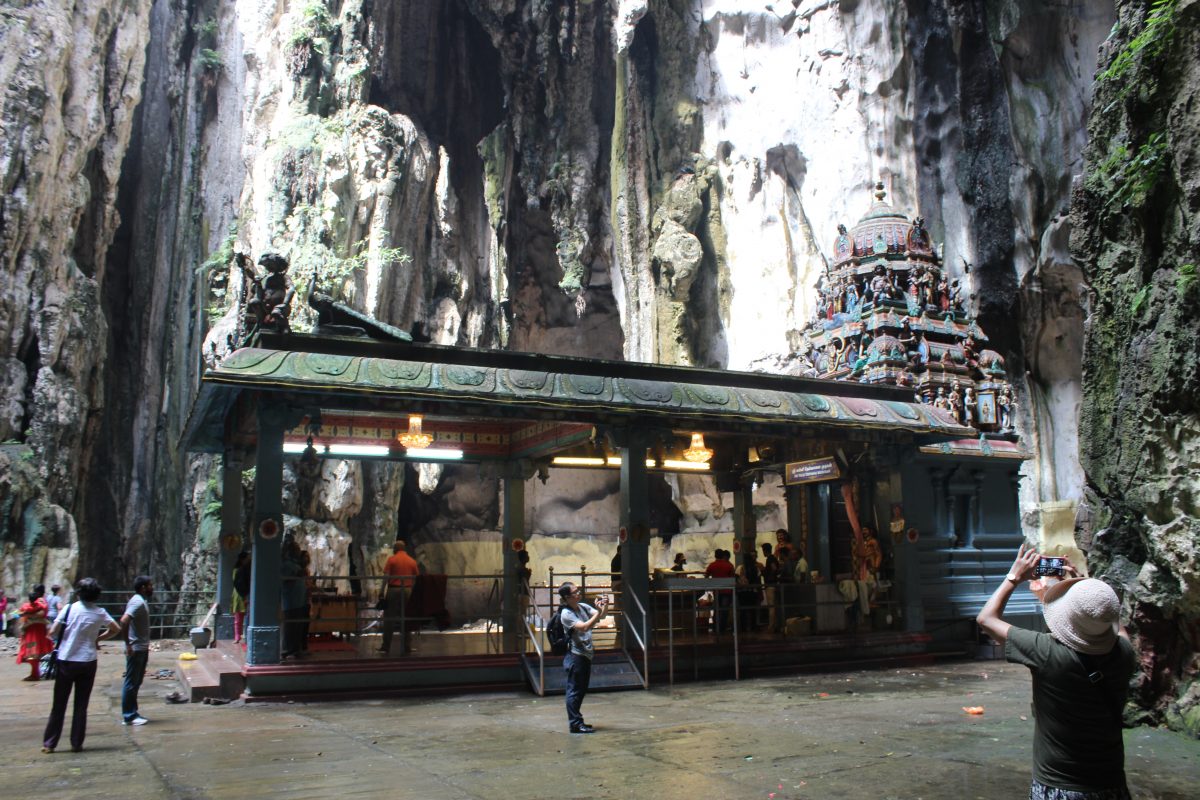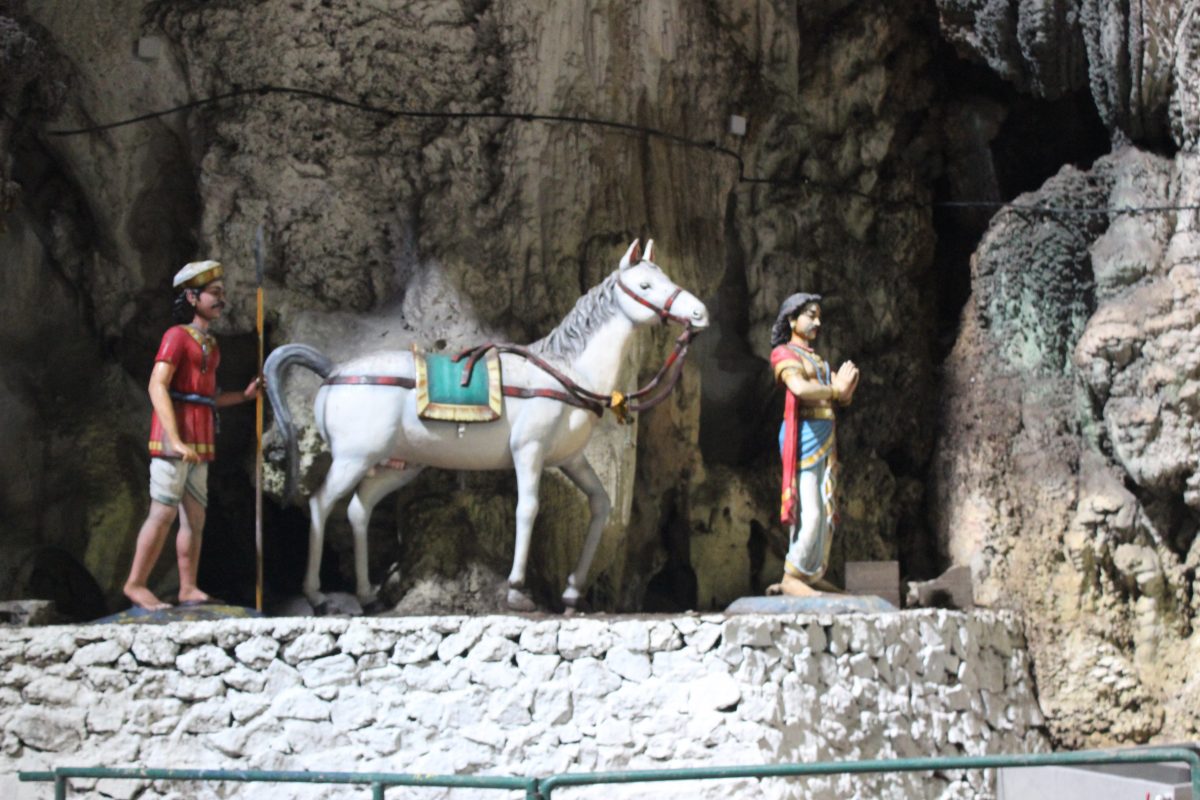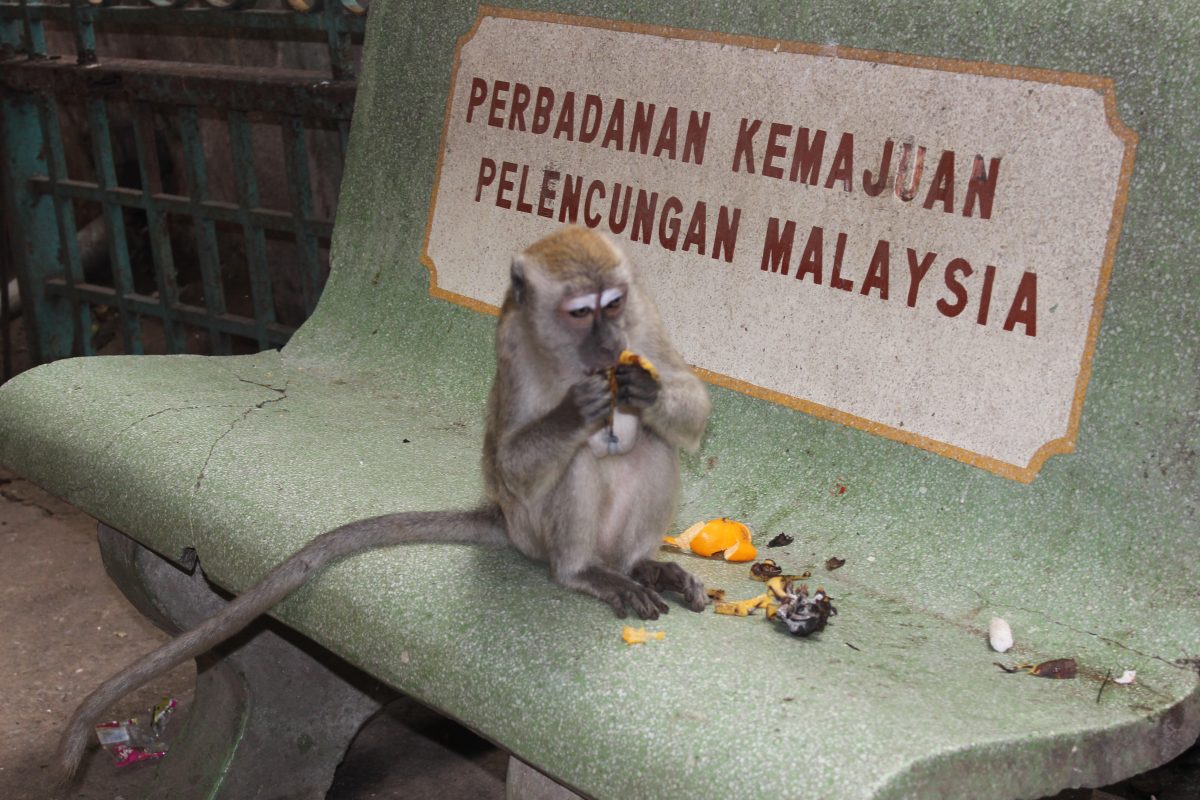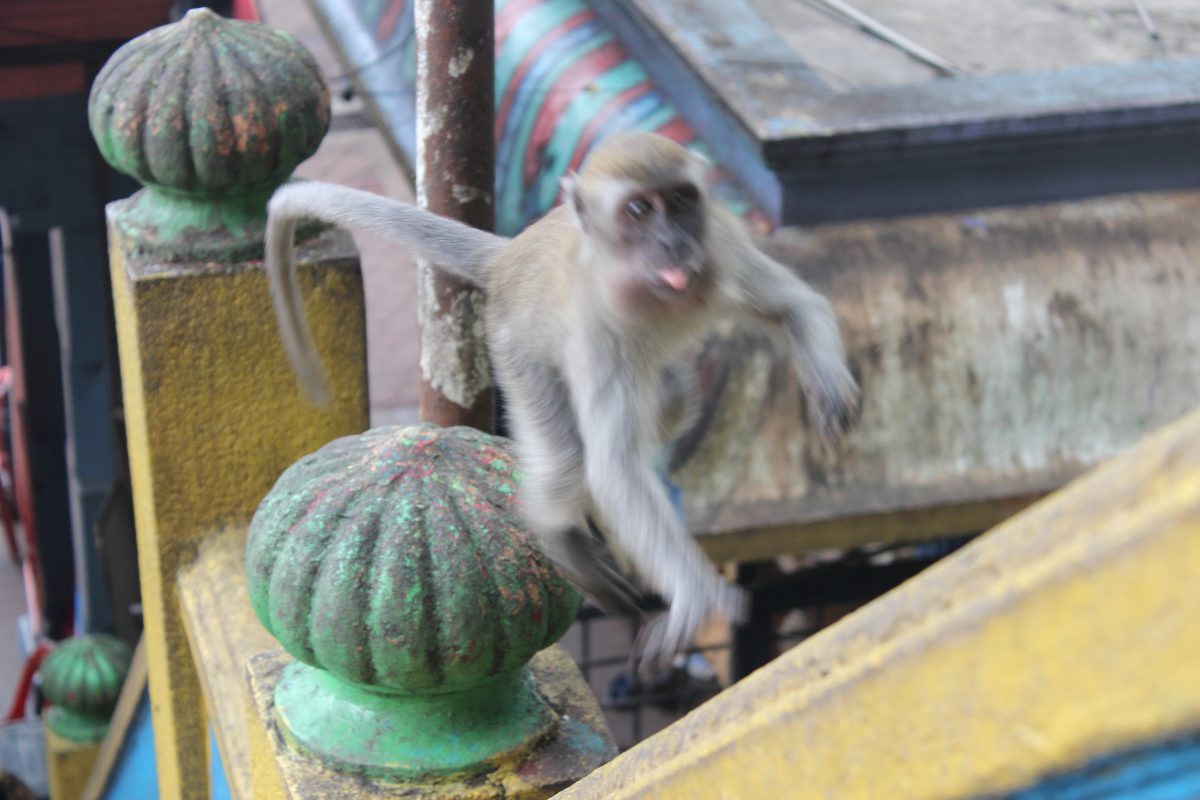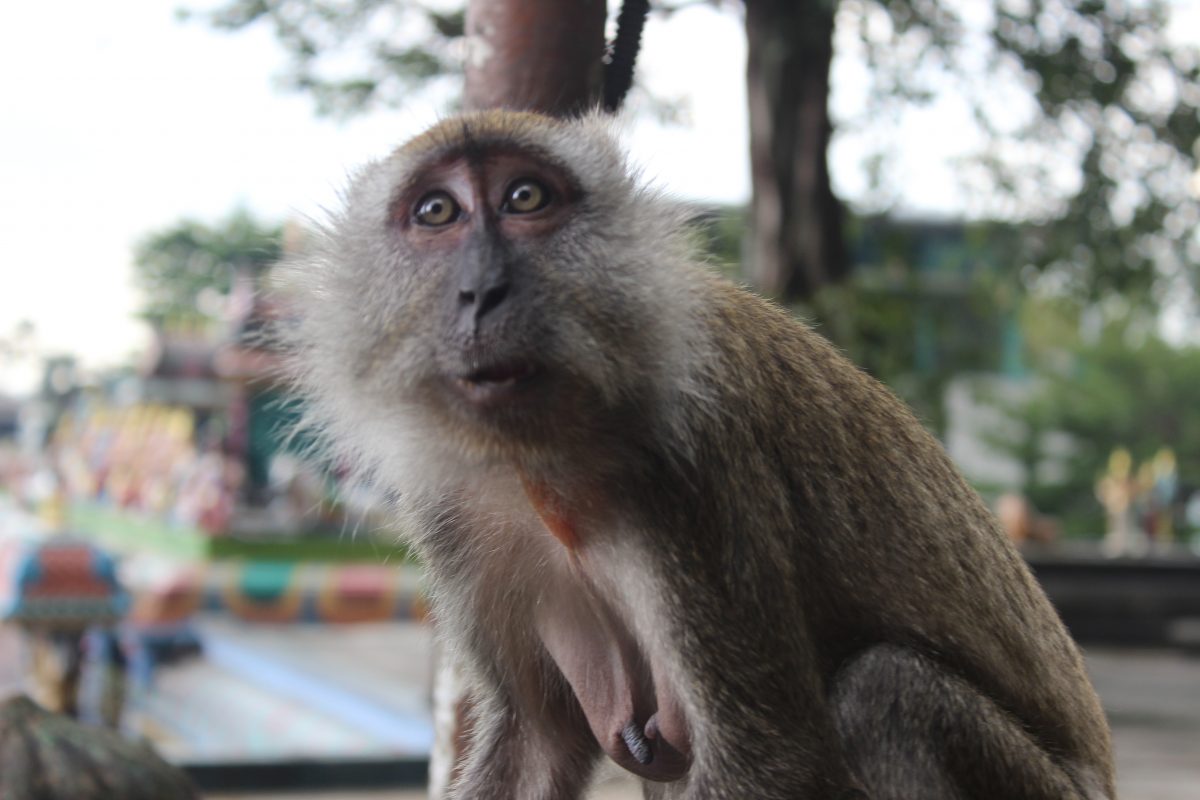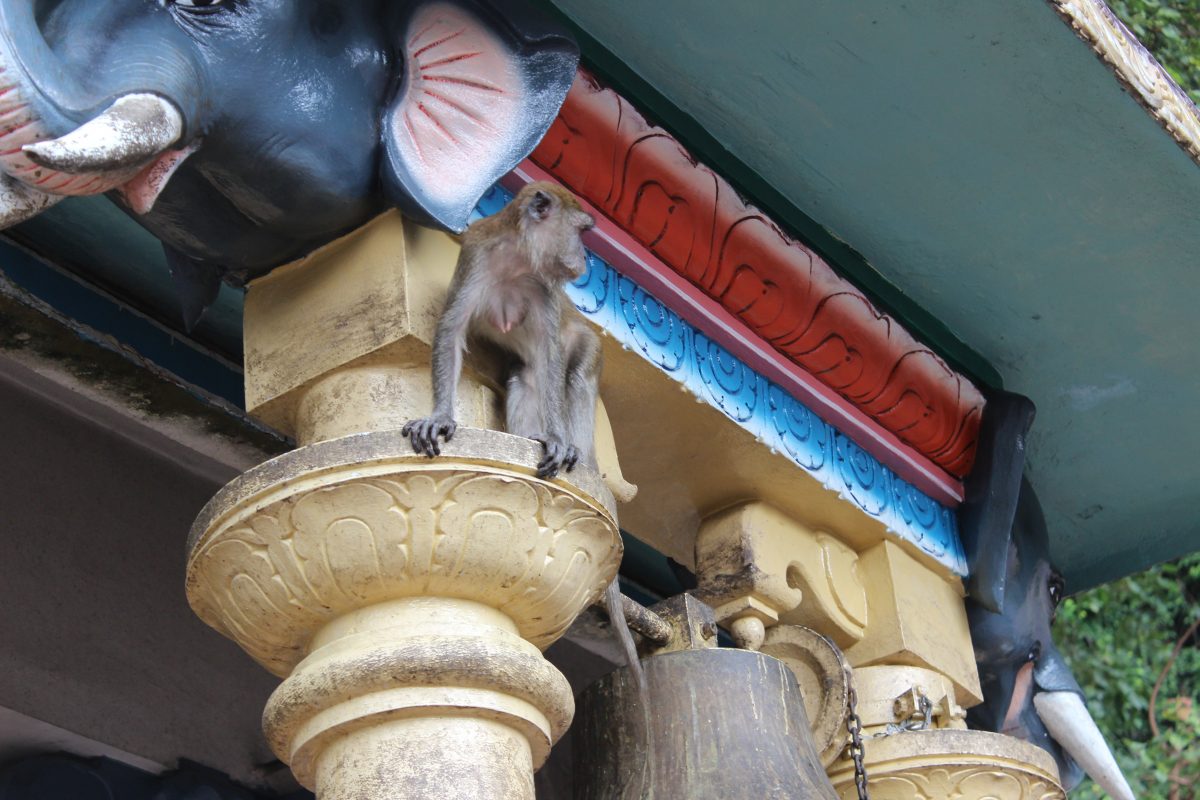Visitors of Kuala Lumpurs nightlife district situated around Changkat Bukit Bintang will not fall short from venues offering life music. One of the quiter places is the Opium bar and restaurant which pleases its vistors with the gentle sounds of Chinese classical music.
The young lady producing the beautiful music is Catherine Chaw (25), sitting in the corner of the terrace and playing a traditional chinese string instrument called Guzheng. Three times a week Catherine entertains her audience from 7:30 to 9:30 pm. MALAYSIA INSIGHTS had the chance to talk to her and learn more about herself and her instrument.
Catherine, you are playing a quite unique instrument, please tell us why did you opt for learning the Guzheng?
My mom chose it for me when I was 13 years old. So now it is almost 12 years I have been playing…
Is it a popular instrument in Malaysia?
It starts getting popular but still many people do not know it. The Guzheng is a Chinese variation of a zither which you might be familiar with in Germany and it has 21 strings.
Did you enjoy learning the instrument from the beginning or would you rather have done anything else?
At the time I just followed what my mother wanted me to do. She likes the Guzheng so much. I only started to enjoy it when I joined an ensemble in 2009.
 Tell me about the ensemble, what other instruments does it contain?
Tell me about the ensemble, what other instruments does it contain?
We all play the Guzheng, only for a few songs we will add drums and flutes. We are called Oriental Strings Malaysia and you might find our demo at youtube.
Apart from playing at the Opium almost every night, where else are you performing?
Sometimes at private shows, like tomorrow I will be playing with the ensemble for an insurance company. Otherwise I am also a teacher for the Guzheng.
What kind of music is in your repertoire?
I play traditional music when teaching, following the exam list. When I perform I do mostly classic Chinese songs, sometimes I throw in some western songs, too.
Do you also like to listen to Western music?
Sure, I like many different kinds of music. Classical, romantic music, sometimes jazz.
You said you started playing when you were 13, is that a good age to begin?
Actually I was a bit late , most children pick up the instrument at 6 or 7 years.
[accordion id=“my-accordion“] [accordion_item parent_id=“my-accordion“ title=“MALAYSIA INSIGHTS FAST FACTS: The Guzheng“ open=“true“] The guzheng, also simply called zheng is a Chinese plucked zither. It has 18 or more strings and movable bridges, and the modern guzheng usually has 21 strings and bridges. Plucking is done mainly by the right hand with four plectra (picks) attached to the fingers. The history of the instrument can be traced back to the Warring States period (475 to 221 BCE). The modern zheng however is very different from ones made centuries ago, mainly due to natural evolution influenced by local as well as historical environments but also because of the adoption of Western musical styles. [/accordion_item] [/accordion]How long would it take to master the Guzheng?
We got 9 grades, approximately you would need one year for each grade. If you practise hard you can be faster, though.
Obvisiously you practised hard because you play very well.
Thanks (smiles)
Do you enjoy playing at the Opium?
Yes, I do and I appreciate very much that my boss and Opium give me the chance to play there.
What are your future plans, and how long will you be playing at the Opium?
My contract at Opium is renewed every month, so I do not know how long it will be running. My future plans? Personally, I hope I can travel and visit many countries to learn about their culture. Especially I am interested in Japan. Secondly, I hope we can develop our ensemble and become more successful and also musically more diverse. We want to add other instruments and do more Chinese and western music. Hopefully our dream comes true.
